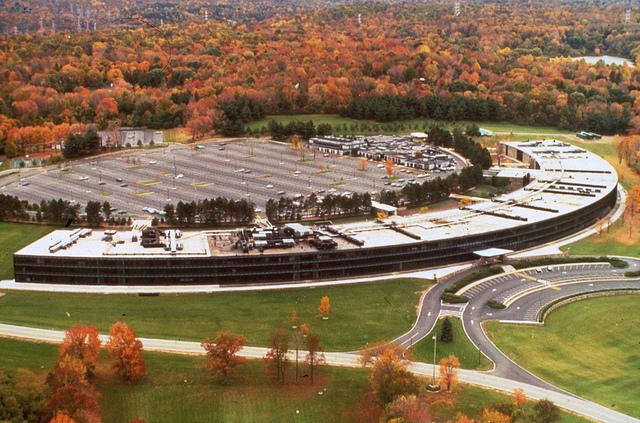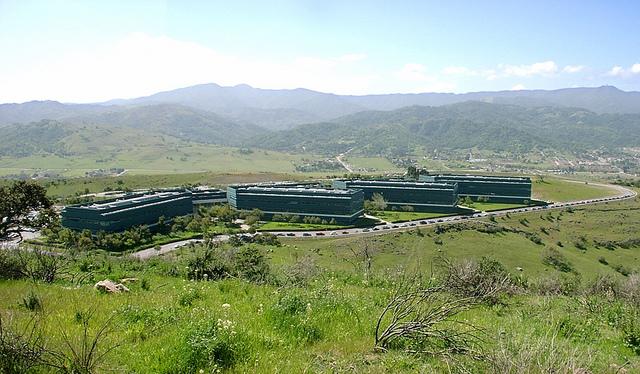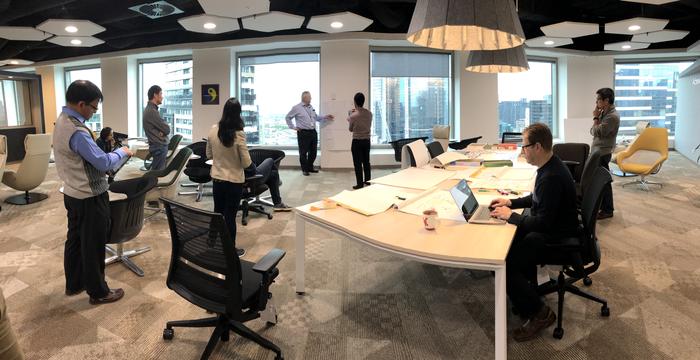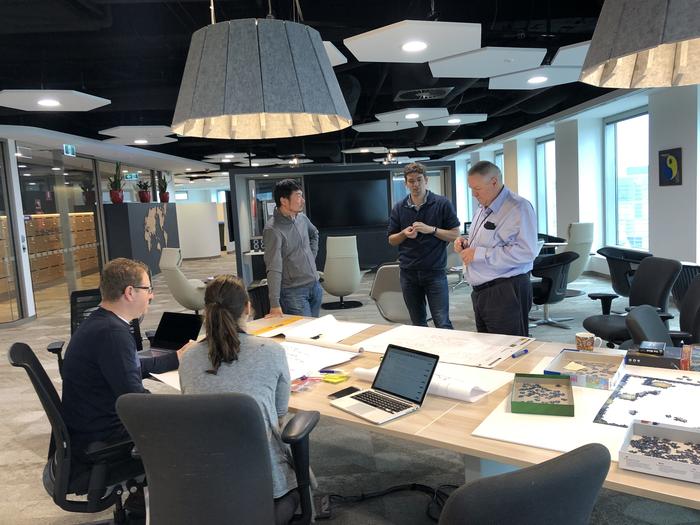IBM’s R&D arm – IBM Research – is the largest industrial research organisation in the world. With a history stretching back to 1945, when Thomas J. Watson Sr established the first corporate laboratory dedicated to pure scientific research, its inventions include the hard disk drive, the ATM, the smartphone, the portable computer, the magnetic stripe card, the relational database and the technology behind laser eye surgery.
The company’s rate of inventiveness shows no signs of slowing. In 2018, IBM was granted more patents in the US than any other company. It’s a distinction the company has held for 26 consecutive years, last year breaking its own record with 9100 patents granted.
IBMers also authored hundreds of journal papers, making Big Blue the second highest ranked corporation in Nature’s annual index.
Around a third of those patents, and the majority of journal papers, came from the more than 3000 scientists working within IBM Research, which boasts 12 labs located across six continents.
“More than a quarter century of patent leadership,” as the company calls it, has not been achieved by sticking to the same strategy for all those years. Over the last decade IBM Research has updated its approach, becoming more outward facing, collaborative and situated closer to the action.
“In the early days there was an assumption that researchers need to be left alone. So our old labs are all in the middle of nowhere, park-like settings, where they don’t get bothered by the rest of the world,” explains Juerg von Kaenel, who has been with IBM Research since 1985 and is now associate director of its Melbourne lab.
“We don’t do that anymore,” he says.
Close to the action
IBM Research’s first purpose built headquarters was constructed in 1961, when the division got too big for its labs at Columbia University and grew tired of moving around temporary facilities in New York City.
The Thomas J Watson Research Center is located an hour’s drive from the sleepy historic town of Yorktown Heights, and surrounded by nature reserves and farmland.

The ‘find a quiet corner’ approach to locating labs continued for many years. The division’s first European lab is situated in the peaceful municipality of Rüschlikon in Switzerland, on the shores of Lake Zurich. Its French base (since closed down) was situated in the middle of 23 hectares of countryside near the village of La Gaude, Nice. A west coast lab was established in 1986 in the green surrounds of Almaden near San Jose, California.

In more recent years, however, labs have been opened in locations far more conducive to collaboration.
IBM’s Melbourne lab, which opened in late 2011, is slap bang in the centre of the city, on City Road across the river from Federation Square.
“This lab in Melbourne’s a very good example. We’re in the CBD, we’re close to universities, so these partnerships can happen, so we can actually talk to the world,” von Kaenel says.

“Definitely from the start of this lab: its location [was] based on the existence of an ecosystem in which it could thrive. It was an important consideration,” adds Iven Mareels, lab director. “It offers an incredibly unique opportunity to bridge academia and industry.”
RMIT is a 16-minute walk away, University of Melbourne is 30 minutes. La Trobe and Monash have city campuses nearby too.
Given life science and health is the focus of about half of the researchers in the lab (the others explore how governments can automate and digitise, as well as IoT, edge computing, energy and blockchain) it is also beneficial to have the Royal Melbourne Hospital, St Vincent’s and the Parkville Biomedical Precinct within strolling distance.
“In terms of the ecosystem, Australia has global leadership position in terms of healthcare and medical research so it makes sense to have a technology company with a big emphasis on health here,” says Natalie Gunn, senior manager at the lab and leader of its ‘AI for the eye’ effort.
Keeping things open
IBM Research’s perspective on sharing its discoveries has also changed in recent years.
“In the early days, patents were thought of as either for saving money or for licensing out,” says von Kaenel, who followed his now wife into IBM’s Zurich lab as an intern, where he completed his PhD.
“We have evolved as a community… it took us a long time to understand that an ecosystem is important. You can’t have 100 per cent of every market. So we also leverage patents for example by donating them to open source, which then guarantees that a large ecosystem can grow than if we were the only ones in that particular space,” he says.

“It’s not just closing off stuff as it was early on, but also keeping things open for the community in which we operate,” von Kaenel adds.
The same is true of its research pre-patents. Links have been forged with nearby universities and domain experts. That’s especially critical for healthcare research, explains Mareels, formerly dean of the University of Melbourne School of Engineering.
“Collaboration with the outside happens now!” he says. “We don’t have medical doctors on our staff but we will be working with doctors and medical experts to guide our research and form partnerships, yes of course.
“They’re natural partners to discuss ideas and try ideas out and many of our ideas won’t fly and they won’t pass their tests of medical relevance, well then that’s an area we won’t pursue,” he adds.
IBM is also a key partner in the Australian Research Council (ARC) Training Centre in Cognitive Computing for Medical Technologies, which launched in October.
“We need a balance; we want to make sure the scientific world knows about us and we know about it, and that means we need to write papers, we need to be part of the conversation,” Mereels says.

Globally, IBM Research is a far more open organisation than it has been in the past. This week, it released a dataset of annotations of a million human facial images, in a bid to help the AI community develop fairer systems. “We don’t believe we can do it alone,” the company said.
“Partnerships are essential, in the AI world it is essential,” Mareels says.
Climb every mountain
Collaboration with industry and other research organisations helps sharpen the focus of the lab’s work, von Kaenel explains.
“In the early years we’d get a thousand ideas of what we could do, then fail to realise a single one,” he says. "[Now] we focus completely differently on how we become a better player and have a bigger impact on the ecosystem,” he says.
And the more recent sharing approach is proving a major benefit to IBM and the wider research community.
“One way of thinking about [our work] is rather than breakthroughs, think of it as a mountain or staircase. You build knowledge and you publish and patent it – you build another step and another step and another,” von Kaenel says.
“You need a lot of knowledge to lift. So the breakthroughs are enabled not by a single organisation but by the fact you’re working in an area and everything you learn you make available. You patent and publish, and you stand on that to do the next part. It’s that relentless trying to improve ourselves and push others which leads to the breakthroughs,” he says.

